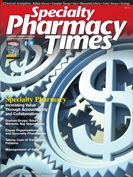Publication
Article
Specialty Pharmacy Times
Accountability and Collaboration
Author(s):
Our editor-in-chief comments on this issue's cover article and the definition of specialty pharmacy as he explores the cornerstones of the practice and how specialty pharmacists navigate this complex space.
There is much that differentiates specialty pharmacy from the common definition of “traditional” pharmacy practice. Some may say that pharmacy is pharmacy and the focus of the practice should be on the accurate dispensing of a prescription product to a patient. Not that getting the right drug to the right patient at the right time and with the right dose should ever be taken for granted—and any pharmacist who has filled a script will tell you a filling error is their worst nightmare. Specialty practice is focused on so much more than the distribution side of pharmacy. Two of the cornerstones of specialty pharmacy are accountability and collaboration, and as a standard of practice these attributes are taken to higher levels. Our cover article defines the 4 key stakeholders we, as specialty pharmacists, are accountable to and collaborate with:
1. Patient/Caregiver; 2. Health Care Providers; 3. Payers; and 4. Pharmaceutical Manufacturers.
Maximizing the patient’s outcome will always come first regardless of the practice setting. However, there is an even higher bar in specialty since in most cases the products and the disease states are more complex and the level of interaction and importance of those exchanges greatly influence the outcome. In specialty pharmacy practice, there is little room for error in the already must be perfect world of pharmacy. To get it even more right, specialty pharmacy works in tandem with fellow health care providers. Communication is essential and new tools are constantly being developed to enhance these collaborative efforts.
Payers come into play as they have assumed the role of “financial gatekeepers” whose self-imposed duty is to attempt to assure that value is created based on the spend. New metrics around value are continuing to evolve. One of the more recent trends that will continue to drive accountability is the Affordable Care Act (ACA) and the Medicare Plan Star Ratings (MPSR). MPSR will have influence on measuring the degree of collaboration and accountability between the 4 stakeholders. The Affordable Care Act introduces a quality bonus payment into the Medicare Advantage program. To support the process of access to these lifesaving specialty products, manufacturers often provide copay and patient assistance programs, often administered through specialty pharmacy in some fashion.
As most specialty products require complex management, the specialty pharmacy or pharmacies are imbedded early in the process, more often pre-approval by the manufacturer who enters into a contractual relationship with 1 or more specialty pharmacies to assure accountability and collaboration with the other 3 stakeholders and regulatory bodies. Examples of services provided by specialty pharmacy include REMS, patient training on self-administration and dose adjustments, data management, reimbursement support, and compliance and persistency, to name a few. Specialty pharmacies often compete for access to these products where manufacturers engage in selecting a finite network of providers for their product.
We take a deep dive into the world of “Orphan Drugs” where key elements include the difficulty identifying patients, growing regulatory issues and demands, the changing reimbursement environment, and an understanding of evolving distribution models. Last year, nearly one-third of all drug approvals were for orphan drugs.
Orphan drugs are often defined as having patient populations of 200,000 or less in the United States; however, there is a significant focus on the “Ultra-Orphan” populations which are even better defined as markets of fewer than 6000 patients. A large part of the rare or orphan marketplace is really made up of small patient populations. This is an important distinction because markets of a few hundred to a few thousand patients are completely different from larger markets of 50,000 to 200,000, and they require a different approach.
In our winter edition of Specialty Pharmacy Times we also explore changes to the coding using the new ICD-10 standard which will further the process of accountability and collaboration with new definitions around electronic medical record keeping and payment. Viewpoints: The Last Word delves into the intricacies of the 4 main methods for a biopharma to get the required “freedom to operate” before it takes a new biopharmaceutical candidate through its rigorous clinical trial process, paying for the process of discovery, the exchange of technology, the invention itself, and again the collaborative effort of patent sharing.
About the Author
Dan Steiber, RPh, is a principal of D2 Pharma Consulting LLC (d2rx. com) and is responsible for commercial operations, trade-supply chain strategy development including 3PL selection, regulatory oversight, and “operationalizing” organizations. Dan has served in several senior positions in pharmacy, distribution, and industry over the course of his 35-year career.







